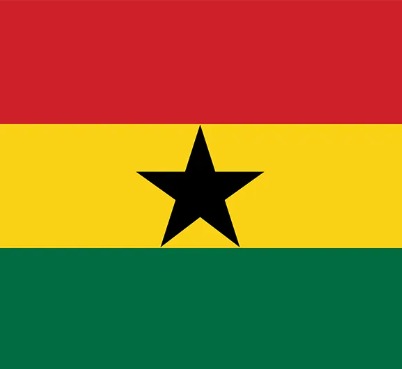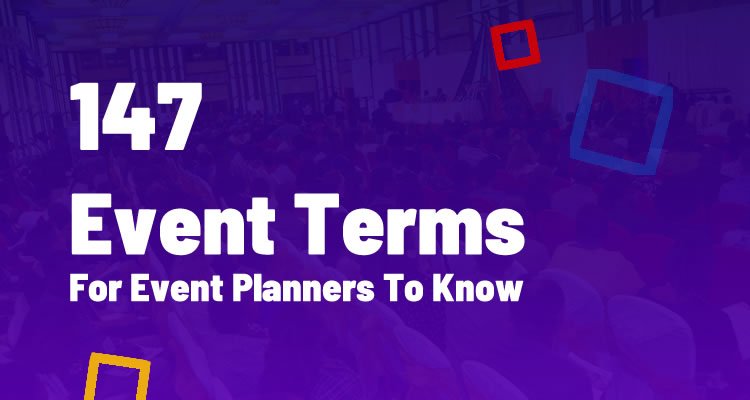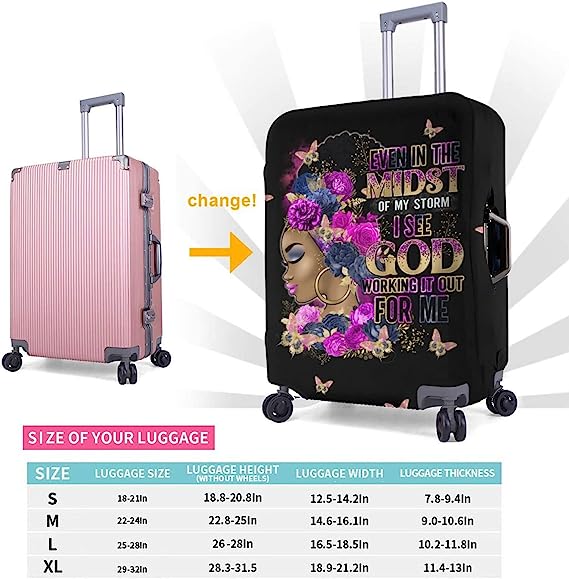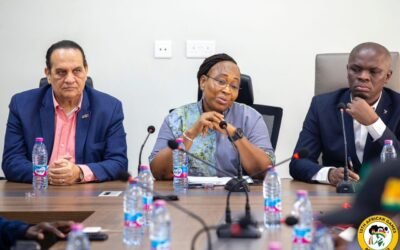Have you ever gone into a meeting certain you know what you’re going to say, only to be caught off guard when asked if you know your RFP from your PEO? Or perhaps your Aspect Ratio to CMP? If yes then you know I am talking about, if no, then it’s time to learn my 147 event terms for event planners.
Whether you’re a seasoned meeting planner in need of a refresher on modern terminology or just starting out in the event sector and want to make a good first impression, fear not.
By following this simple approach, you can learn the event business jargon that everyone else appears to know.
Industry experts use a lot of vocabulary, jargon, and acronyms that can make it seem like they’re speaking a different language, but by being familiar with these terms, you’ll be able to walk back into that meeting with renewed confidence and knock your pitch out of the park.
We’ve compiled a comprehensive list of crucial terms that every meeting and event planner should be familiar with. We’ve divided them into five categories to assist you grasp what they all mean and master this “language” of acronyms and keywords:
Table of Contents
- Events (Including Conferences and Exhibitions)
- General Event Terminology
- Technology
- Venue and Facility
- Industry Associations
Events (including Conferences and Exhibitions)
B2B
This acronym stands for ‘Business to Business’ events, meaning corporate or trade-related events.
B2C
The opposite of B2B, this acronym means ‘Business to Consumer/Customer’ events, often relating to more consumer and public-facing events.
Breakdown / Load Out / Strike
These terms all mean to take down equipment and clear away items that have been set up for an event, after the event is complete.
Concurrent Sessions
During larger events, meeting planners often host shorter educational meetings known as ‘concurrent sessions’ which are scheduled to take place at the same time, each focusing on a different subject or theme. Attendees can choose which session, or track, interests them the most.
Conference Pack
If you want to provide your delegates with some information at your conference, offer them a conference pack, which could include a schedule or program of events, a map of the venue and information on venue facilities. Some events offer an event app to replace printed materials.
Consumer Show
A consumer show is a B2C exhibition or showcase of products, exclusives and activations designed to attract the attention of new potential buyers. Often, visitors attend consumer shows to shop, see product demonstrations and socialize.
Day Delegate Rate (DDR)
Day Delegate Rate, or DDR, is a charge by a venue per attendee, per day for an event, based on a full day’s meeting. Depending on the venue, DDR can include meeting room hire, refreshments, lunch, and conference equipment.
Early Bird Registration
Early is the key word here for registration for an event, which often means tickets and services purchased before a specified date are available at a reduced fee.
Emcee/MC
This is the host who presides over the event program. Emcee is shorthand for ‘Master of Ceremonies.’
Get-in
This term refers to the specified time for crew and staff to arrive and access a venue for setup before the public or guests arrive.
Honorarium
A fee paid to a guest speaker.
Hybrid Event
A conference, tradeshow, seminar, workshop or other meeting that combines a live, in-person audience with a virtual, online audience.
Installation & Dismantle (I&D)
Also called ‘Setup and Take Down’—the process of preparing equipment for an event and taking apart that equipment after the event.
Itinerary
Another word for a schedule, agenda, or program. A detailed event itinerary can be created for attendees or team briefings to outline the flow of the event.
Keynote
Whether it’s a presentation or speaker, a keynote refers to the opening address or important plenary session at a meeting that sets the tone or theme of the event. The headline speaker is often a public or well-known industry figure whose presentation motivates the audience and a strong motivator for guests to attend the event.
Load In
The opposite of ‘Load Out’, this term refers to a specific period of time for loading in equipment/items to install for an event.
Master Account
An account set up to which all charges for a specified group should be applied (often by the host or event planner).
Modified Meeting Package (MMP)
The ‘Modified Meeting Package’ refers to a type of conference package. It can typically mean a full conference package with the exception of one meal (dinner in most cases).
No-show
An expected guest (i.e. delegate, hotel guest, attendee) who does not attend and hasn’t advised the organizer or hotel of a planned absence or delay.
Post Event Report
A report detailing the event history after the event has happened, including number of attendees, number of no-shows, total cost per person, profit, etc.
Post Event Feedback
Advice formerly offered to event organizers that includes positive and/or negative comments, suggestions, and notes provided by guests after the event, in order for event planners and organizers to gain an understanding of successes and where improvements can be made.
Pre Event Feedback
Used to qualify attendees before the event and gather data about them, this type of information involves a questionnaire used to gather information from attendees, with questions often asked during the online event registration process.
Pre Registration
Also referred to as ‘Advance Registration,’ this phrase means booking onto a meeting or event prior to the day of the event.
PA System
Shorthand for ‘Public Address System.’ A device that amplifies sound in one large area or throughout several rooms through speakers so that messages can be shared.
Pro Forma Invoice
This is an invoice (or bill) provided by a supplier prior to the provision of the service.
Proposal
A written offer from a vendor to a prospective buyer, produced in response to an inquiry. This proposal will attempt to match the requirements and detail costs, availability, and specifications for the potential client.
Request for Information
This is a preliminary step to a ‘Request for Proposal’ (see below), where a company researches potential vendors for details about their products and services.
Request for Proposal (RFP)
A formal request by an event or meeting planner, which lists/details all of the specifications required for the event, sent to suppliers in order for the companies to draw up a proposal of their services and bid for the business.
Shell Scheme
A modular system (which normally comes in one-meter modules) used at exhibitions to showcase companies’ products and services.
Session
This is one meeting, presentation, or workshop that can take place in a breakout room during a larger meeting or conference.
SMERF
This acronym stands for the ‘Social, Military, Educational, Religious, and Fraternal’ sectors of the meetings industry.
Space Only
Unlike a shell scheme contract where the modular system is provided, an exhibitor can choose the space only option, which refers to space on an exhibition show floor, of which the exhibitor can be creative and has to provide their own exhibit stand.
Specifications
Meeting or event requirements.
Talent
The name of an individual or company that has been hired to entertain at an event, demonstrate products, work at an exhibition/conference to greet visitors, stage a performance, or host an awards ceremony.
Target Date
The event management team decides this date for the arrival of freight at an event—if shipments are received before or after this target date, a penalty fee may be charged.
Trade Show
Often referred to as an exposition or B2B exhibition, a trade show is an event where a specific industry meets its peers. Goods and services are exhibited and demonstrated.
Transcription
A typed or written document that has recorded a speech or discussion from an event or meeting.
Traffic Flow
In terms of events, ‘traffic flow’ refers to the movement of visitors through an exhibition. It can also refer to how attendees move from one area, hall, or room to another.
Waitlist
A client is ‘waitlisted’ when an event, session, or space is fully booked. They can be held on a waitlist for cancellations and if a spot becomes free they can be offered the opportunity to attend.
Wrap-up
This can mean either the end an event or meeting or a debrief following an event, otherwise known as a ‘wash-up’ meeting.
General Event Terminology
Act of God
These three words refer to an extraordinary natural event, such as extreme weather, flood, earthquake, or similar natural disaster that cannot be prevented or foreseen and which contracting parties have no reasonable control over. The cancellation of an event or inconveniences because of such an ‘Act of God’ renders performance of the contract illegal, impractical, or impossible. Therefore neither party has a legal responsibility to continue performance of the contract.
Accepted Practices Exchange (APEX)
An initiative of the Convention Industry Council. Designed to develop and implement industry-wide accepted practices, APEX brings industry professionals together with cost savings and better education.
Attrition Rate
A measure of how many event registrants actually attend, calculated by dividing the number of no-shows by total registrants for the event or conference. For example, if 100 people register for an event and only 70 are in attendance, this event’s attrition rate would be 30%. In the events industry, when reviewing a contract to block off rooms or space for an event, meeting planners may come across an attrition clause.
Bid Document
A Bid Document is a type of proposal from a potential vendor offering their services, which can include approximate costs, logistics, and time scale.
Blackout Dates
In the events industry, the term ‘Blackout’ means a period of time when tickets or specific prices are unavailable. This could be due to a result of high demand and limited availability, the dates occurring over major holidays when consumer travel is at its height, during a hotel’s busy season, or a venue’s limited inventory due to a previously booked event.
Cancellation Clause
This contract clause details the terms and conditions under which a company may cancel or terminate the agreement or reservation.
Charter
This word has a couple of different meanings in the events industry. It may refer to the rent or lease of a form of transportation (such as bus, plane, or boat) to an organization. It may also relate to the grant of authority or rights allowing the recipient the prerogative to exercise the rights specified in a contract. Charter also means the role and responsibility in a project to serve as a reference of authority for the future.
Certified Meeting Professional (CMP)
A well-recognized certification programs for professionals in the meeting, convention, and exhibition industries, organized by the Convention Industry Council.
Colloquium
This word refers to an informal participatory discussion around group-selected topics.
Contingency Plan
Also known as a ‘backup plan,’ this document has a crisis management agenda planned in advance before the event takes place. This is to address what to do if an emergency occurs or if the intended event plan changes.
Convention & Visitors Bureau (CVB)
A ‘Convention & Visitors Bureau’ is an organization that offers information to meeting planners, travel agents, and visitors including news, events calendars, lists of suppliers, and a directory of accommodations.
Critical Time Plan or Critical Path
An event management plan used to ensure an event runs smoothly, detailing which tasks need to be fulfilled and who is responsible for them, and what time-frame they need to be completed by.
Data Protection
The responsibilities of anyone dealing with personal data. Laws and guidance vary from country to country.
Destination Management Company (DMC)
A private company that offers local expertise for event planners from out-of-town to assist with the planning and execution of conferences, meetings, concerts, exhibitions, and other large events.
Drayage
Drayage refers to the transport and storage of freight and exhibits for an event, including the removal and return of crates and boxes during and at the end of the event to a carrier loading area.
Estimated Departure Time (EDT)
Scheduled time when a party or person will leave a venue.
Estimated Time of Arrival (ETA)
Scheduled time when a party or person will arrive at a venue.
Familiarization Trip
Also known as a ‘Fam Trip’ for short, this refers to reduced-rate or complimentary travel offered to industry professionals to introduce them to an area and showcase its attractions, hotels, and facilities. Often provided to showcase why business should be brought to that destination.
Housing Bureau
Often offered by a convention bureau, this is a third-party agency who looks to manage the housing process for a meeting.
Incentive Travel
This type of travel is a reward or incentive given by a company to its employees to motivate productivity.
Lead Time
The time between an initial venue inquiry and when an event actually takes place at a venue.
Meeting Professional
This term describes an individual in the events industry who works in the meetings sector.
MEEC
This acronym stands for the ‘Meetings, Expositions, Events, and Convention’ sectors of the meetings industry.
MICE
This is an internationally used term in the events industry, which stands for ‘Meetings, Incentives, Conventions, and Exhibitions.’
Net Promoter Score (NPS)
Standardized metric for measuring the loyalty of an organization’s client relationships. Typical NPS surveys ask users likely they are to recommend a service or product to a friend.
Non Transferable
Once a ticket has been issued, if it’s referred to as ‘non transferable’, then no name changes are allowed to be made.
Private Dining Room (PDR)
A room in a restaurant separated from the main dining area that can be reserved by groups to dine with more privacy. Frequently requested by event planners for parties or group dinners after a meeting or event.
Rider
In events, this usually refers to food, drink, and other requests that a performer has specified should be provided for them backstage. It can also mean an amendment to a contract.
Risk Assessment/Management
Assessing the possibility of injury or loss to the person attending the conference and ensuring there is adequate insurance covering possible injuries or loss. Event planners often provide a detailed Risk Assessment for every event they manage.
Return on Equity/Event (ROE)
The profit or other gain an event generates for organizers. With regards to equity, the measurable amount of net income or profit a company generates with the money shareholders have invested. With the ‘Return On Event’ phrase, ROE can refer to the value brand awareness exercises brings, and not just the contribution to sales volume.
Return on Investment (ROI)
A performance measure key to meeting planners and organizations. This refers to the ratio between the net profit made and the cost of investment in the production of an event.
TBA / TBC
To be announced/To be confirmed.
Value Added
Added products or services a facility or organization can offer on top of the contract, which can include amenities such as free Wi-Fi, upgraded rooms, or free parking.
Value Added Tax (VAT)
A consumption tax commonly used in the European Union.
Technology
Augmented Reality (AR)
‘Augmented Reality’ is a technology that superimposes a live direct or indirect view of a physical, real-world environment, often across multiple sensory modalities.
Attendee Relationship Management
Software that allows event planners and managers to create a database of contacts so they can better monitor, manage, and maintain contact relationships.
Audio Visual (A/V)
Refers to equipment with both sound and visual components event planners use for presentations, including screens, monitors, projectors, microphones, video, and sound equipment.
Customer Relationship Management (CRM)
A shared online database system that stores a major list of contacts and their details. This system allows companies to manage their interaction, event attendance history, and communications with their clients in an organized way.
Central Reservation System (CRS)
Database software that contains information about availability, rates, and related services, and through which reservations can be made.
HDMI
‘High-Definition Multimedia Interface’ (HDMI) is a digital audio/video/data connector; a replacement for analog video standards that is compatible with computer monitors, video projectors, digital TVs, and digital audio devices.
LCD
A type of monitor used for displaying images and video. LCD means ‘Liquid Crystal Display.’
LED
‘Light Emitting Diode,’ a type of display and lighting technology with wide ranging applications, including ambient lighting and large display screens.
Livestream
Coverage of an event broadcast live over the internet, often via social media channels.
Metric Converter
A tool that allows meeting and event planners to convert non-metric units into metric units, so they can easily determine the size of the room they will require for their event.
Open Rate
A measurement commonly used by email marketers that refers to the number of individuals who have ‘opened’ or ‘viewed’ an email sent out in a campaign. Open rate tracking is available through most email marketing providers.
Overhead Projector (OHP)
Type of equipment previously found in conference rooms or classrooms. Overhead projectors displayed enlarged images onto a screen or wall from a transparency placed below the projector and lighted from underneath.
Teleconference
A conference being broadcast simultaneously to multiple sites via phone or other audio.
Video / Web Conferencing
Using video technology to broadcast an event or meeting to participants unable to attend in person.
Virtual Trade Show
A trade show that is hosted online. It takes the same form as a traditional physical trade show and allows attendees to communicate with exhibitors through web chats, while vendors can showcase their products and services at 3D virtual booths.
Virtual Reality (VR)
An artificial environment created using a computer-generated simulation of a real physical, three-dimensional image, body or place to create an imagined and interactive environment.
Webcast
Also known as ‘Simulcast’, this is a media presentation or an event that is broadcast live over the internet.
Webinar
A presentation, session, forum, or seminar broadcast over the internet.
Wireless
Tools and products that operate without any need for a wired connection. This can relate to internet, microphones, printers, speakers, headphones, and other technology products.
Venue and Facility
Across The Board
This term refers to an all-inclusive price given, commonly used by many venues and suppliers, that includes all hidden fees such as taxes and gratuities.
Air Walls
Removable dividers in meeting spaces which allow event planners to create flexible spaces to meet their requirements. They can be used to facilitate multiple breakout spaces during a larger conference.
A La Carte
French term that translate to ‘from the menu,’ referring to items selected individually as opposed to offered in a package.
Amenities
This word can refer to a property’s features and facilities, as well as often complimentary items offered in a venue, such as free food or drink, office supplies, or concierge services.
Auditorium / Theater-style Layout
A meeting room or hall set up with chairs set in rows facing a stage or podium. The inner chairs directly face the front of the room, while the outer chairs may be angled to provide a better view of the stage.
Back of House
This term refers to areas of support and service usually not seen by guests, offered by the hotel, event venue or facility.
Banquet-style
Also referred to as ‘Pod’ or ‘Round set’, this seating arrangement is designed for large audiences for events such as awards ceremonies and galas, where there are typically round tables of 8-10 guests seated
Banquet Event Order (BEO) / Function Sheet
Also called a “Program Execution Order (PEO), this order of instructions outlines all event logistics and instructions a venue needs to successfully execute an event. This document details the timings of the event, space or room setup, menu selections, audio visual requirements, and how the event will be run.
Boardroom-style Layout
Designed to facilitate conversation, preferred for training or committee meetings, this seating arrangement sees delegates seated facing each other around a square, rectangle, oval, or round table.
Breakout Rooms
Smaller rooms used as part of a larger conference or event when a large group breaks into sub-groups for specific sessions.
Business Center
This term refers to a facility, set of rooms, or area in a hotel or event venue used for the sole purpose of effective business meetings and presentations. Various office facilities and services, such as printing and photocopying are offered to support the event team on site.
Cabaret-style Layout
A number of small round tables are laid out with chairs facing the stage area, with a gap closest to the speaker/performer so that no attendees have their backs to the front.
Chevron / Herringbone / V-shape Layout
This setting design sees the room set up with tables and chairs in rows forming a V-formation facing the stage.
Circle-Style Layout
Layout arranging seats in a circle, where the inner space of the circle is not used.
Classroom / Schoolroom Seating
Imagine an old-fashioned classroom layout; rows of square or rectangular tables and chairs all face the stage or podium, directly facing the speaker or screen.
Comp Rooms
A venue or facility can provide an event planner complimentary rooms (without a charge) based on the number of rooms purchased by a group.
Conference-style / Hollow Square Layout
Also referred to as ‘board-of-directors set-up’ or ‘boardroom set-up,’ a room will feature chairs arranged around a table, with everyone facing in for a discussion. If there are too many participants to fit around one boardroom table, several tables may be used. Hollow square means that there is space in the center between the tables.
Corkage Charge
A small charge applied for bringing outside alcohol into a venue or facility. The charge is normally made per bottle.
Cut-Off Date
This date refers to when a facility releases a block of rooms or space. For example, when a planner agrees to guarantee a number or room block to be reserved, by their ‘cut-off date’ they can no longer decrease the guarantee number without a charge. Or, if the rooms have not been reserved by this date, they can be released for general sale.
F&B
An acronym for ‘Food & Beverage,’ which refers to a catering service provided by a venue during an event.
Fixed Seating
Permanently positioned seating at a facility, not able to be moved.
Floor Plan
A ‘floor plan’ refers to the blueprint or layout of a room or exhibition hall, including electrical outlets, doors, windows, pillars, and other amenities and how the event will be set out within the space.
Force Majeure Clause
This clause is included in most venue contracts to prevent the facility from being held liable should it not be able to hold up to their end of the agreement due to circumstances that are not within the venue’s control. These circumstances include events such as a natural disaster or other ‘Acts of God’.
Horseshoe Seating
Just like a horseshoe, tables and chairs are arranged in a U-shape with rounded corners.
Incidentals
Refers to minor or miscellaneous expenses, other than room and tax rates, that are billed to a guest’s account in a hotel.
Inclusive Rates
Rates that include service fees, gratuities, and taxes.
Low Season
When travel, hotel, and business demand is at its lowest and prices decline.
Over-set
Refers to the number of place settings above a guarantee. A caterer or venue will ‘over-set’ beyond the guarantee number requested by the event host, but the client will only pay for the number of seats and meals actually agreed or consumed by attendees.
Peak Season
When travel, hotels, and business demands are most active and rates are higher. Also known as High Season.
Plus plus (++)
Tax and gratuities are identified as “++” when they are not included in the price.
Pod Seating
Also referred to as ‘Banquet-style’ or ‘Round set’, this seating arrangement is designed for large audiences for events such as awards ceremonies and galas, where there are typically round tables of 8-10 guests seated.
Program Execution Order (PEO)
Also called a “Banquet Event Order (BEO), this order of instructions outlines all event logistics and instructions a venue needs to successfully execute an event. This document details the timings of the event, space or room setup, menu selections, audio visual requirements, and how the event will be run.
Rack Rate
This is the standard rate for a hotel room without discounts, which is often the highest rate published.
Reception-style
Designed to encourage participants to network and a common set up during a cocktail reception. High-top tables are placed throughout the room with limited or no seating provided.
Room Block
Often used by hotels, this phrase refers to the total number of sleeping rooms in an event reservation.
Room Hire Rate
This phrase refers to the cost of hiring a meeting room, exclusive of equipment and catering.
Round Set
Also referred to as ‘Pod’ or ‘banquet-style’, this seating arrangement is designed for large audiences for events such as awards ceremonies and galas, where there are typically round tables of 8-10 guests seated.
Site Visit
When a meeting or event planner wants to check out and tour a prospective or booked venue, they organize a site visit.
Skirting
Fabric that is affixed around tables, risers, and stages—often hiding cords, leads, and storage.
Throw Distance
Also called ‘projection distance.’ Refers to the distance from a video projector to the screen. Throw distance can have an effect on screen size and resolution.
Venue Finding
Researching and sourcing the right venue for an event.
Venue Inspection
This enables event planners to view the facilities before final confirmation.
Walk or Being Walked
These phrases are often used in the hotel industry when guests with confirmed reservations are sent to another hotel due to overbooking.
Industry Associations
ACTE: Association of Corporate Travel Executives
As a global association, ACTE is comprised of executive-level members in more than 100 countries and has a 30-year reputation for pioneering educational and technological advances that make business travel productive, cost-effective, and straightforward.
AWE: Association for Women in Events
The Association for Women in Events was founded in 2015 by 5 professional women in the events sector. The founders wanted the vision of the organization to be centered around a central inclusive place for all women to find resources, mentorship, and career guidance and enhancement.
CEMA: Corporate Event Marketing Association
The Corporate Event Marketing Association advances strategic event marketing and marketing communications for senior-level event marketers and industry professionals.
ESPA: Event Services Professional Association
For 30 years, ESPA (formerly ACOM) has been the only association and voice representing event service professionals from CVBs (Convention and Visitor Bureaus), hotels and convention centers from across North America. The organization advocates for the role and impact event service professionals have on the success of events and of destinations, hotels and convention centers.
EIC: Events Industry Council
Formerly known as the Convention Industry Council, there are 33 member organizations representing over 103,500 individuals and 19,500 firms and properties involved in the meetings, conventions, and exhibitions industry. The Events Industry Council vision is to be the global champion for event professionals and event industry excellence. It promotes high standards and professionalism in the events industry with the Certified Meeting Professional (CMP) program.
IAPCO: International Association of Professional Congress Organizers
IAPCO is a membership-driven organization committed to further the recognition of the profession of the congress organizer, to offer a forum for PCOs and to provide members with opportunities to exchange ideas and experiences.
IAVM: International Association Of Venue Managers
Representing public assembly venues from around the globe, IAVM’s active members include managers and senior executives from auditoriums, arenas, convention centers, exhibit halls, stadiums, performing arts centers, university complexes, and amphitheaters.
ICCA: International Congress & Convention Association
ICCA is the global community and knowledge hub for the international association meetings industry. Representing the world’s leading suppliers in handling, transporting, and accommodating international meetings and events, ICCA comprises of more than 1,000 member companies and organizations in almost 100 countries worldwide.
ILEA: International Live Events Association
Formerly known as ISES, ILEA has been established for over 30 years. ILEA is a global organization representing the creative events professional. It manages CSEP (Certified Special Events Professional).
MPI: Meeting Professionals International
MPI is one of the largest meeting and event industry associations worldwide, providing education, experiences and relationships to help members produce their best meetings and events.
NACE: National Association for Catering and Events
NACE is a non-profit national organization for caterers, event planners, and event professionals that provides education, certification, and a network of resources for members in all segments of the hospitality industry.
NCBMP: National Coalition For Black Meeting Planners
Founded in 1983, NCBMP is a non-profit organization dedicated primarily to the training needs of African American meeting planners.
PCMA: Professional Convention Management Association
With more than 7,000 members and an audience of more than 50,000 individuals, PCMA claims to be the world’s largest network of business events strategists. Headquartered in Chicago, PCMA was established in 1956 and has been dedicated to driving global economic and social transformation through business events.
SGMP: Society of Government Meeting Professionals
SGMP was founded in 1981 and is the only national organization in the U.S. dedicated exclusively to government meetings. The mission is to enhance and promote the expertise of government meeting professionals and to improve the quality of, and promote the cost-effectiveness of, government meetings.
UFI: The Global Association of the Exhibition Industry
UFI is the association of the world’s leading trade show organizers and fairground owners, as well as the major national and international exhibition associations, and selected partners of the exhibition industry. UFI directly represents around 50,000 exhibition industry employees globally, and also works closely with its 55 national and regional associations members.









0 Comments